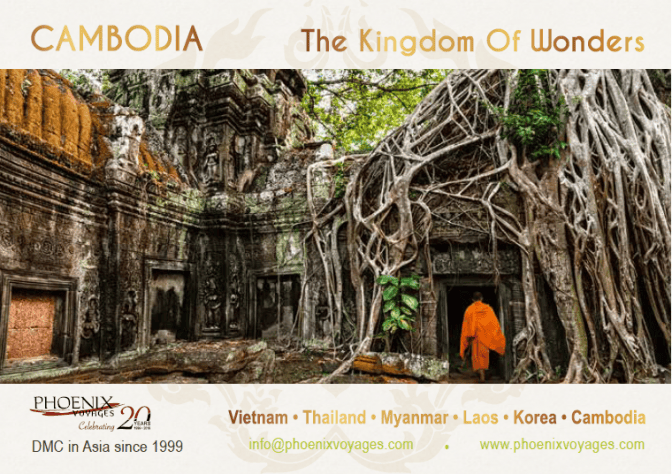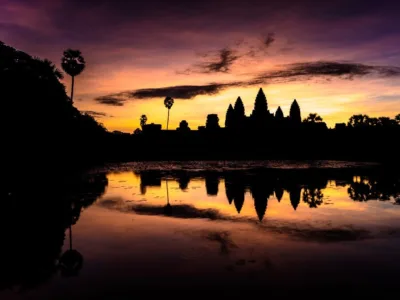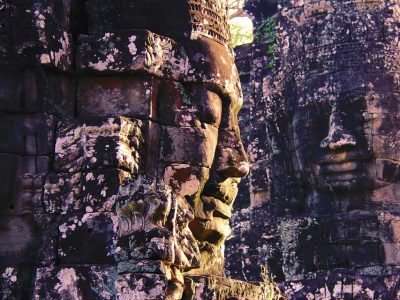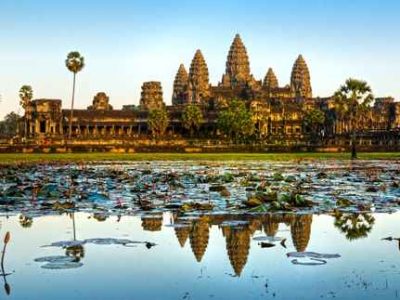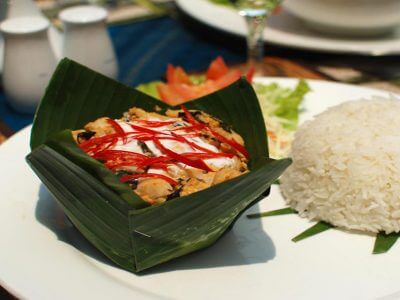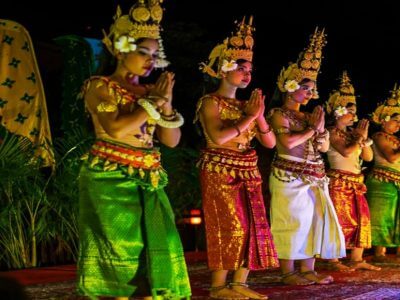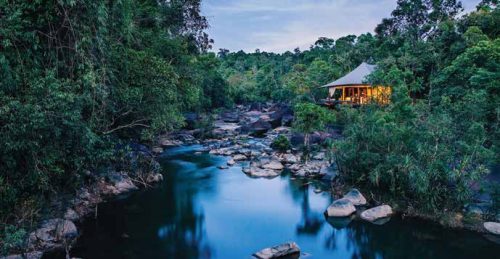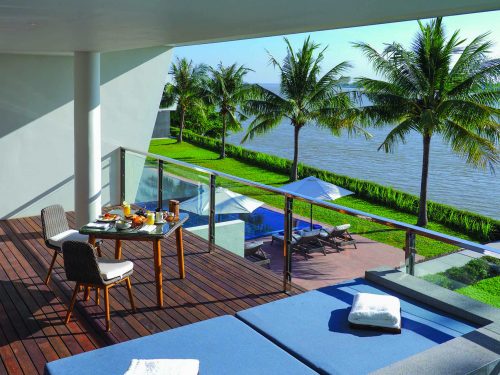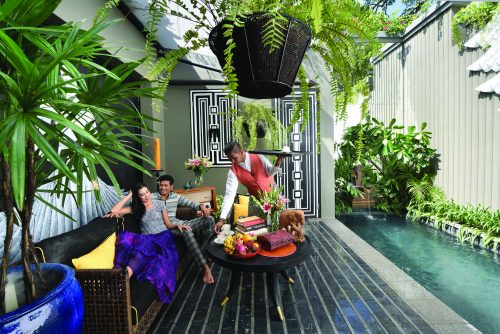Angkor Wat is the world’s largest temple complex, consisting of sandstone temples, chapels, causeways, terraces and reservoirs.
Vast and awe-inspiring, it is a magnificent Hindu temple set in dense jungle, located 152 kilometres from the Thai border, at Siem Reap. The walls are covered in thousands of carvings of gods and events from classical Hindu mythology. It was abandoned in the 15th century when the people turned to Buddhism and rediscovered in 1861.
Elephant, Dangkrek and Cardamom mountains are in the southwest of Cambodia along the northern border with Thailand and the Eastern Highlands and in the northeastern corner are the three main mountainous regions. The majority of the population speaks Khmer, a non-tonal language closely related to Thai. French is the second language and English is taught in schools. Cambodia nationalities comprise of Chinese, Vietnamese and Cham Muslims. A form of Buddhism called Theravada is practiced by the majority of Cambodians, Animism and Caodaism are also practised.
Capital and major centres
Phnom Penh, the capital, has a population of around 1.5 million people and, despite its tumultuous past, its crumbling colonial architecture makes an attractive backdrop to streetside cafés and the redeveloped waterfront precinct.
Peaceful Udong, 40 kilometres north of Phnom Penh, was the capital of Cambodia between 1618 and 1866. The town of Siem Reap is only a few kilometres from the temples of Angkor.
Where to stay
International standard hotels are available in Phnom Penh and Siem Reap, and Sihanoukville is growing in popularity as the only beach resort destination in Cambodia. Facilities are being developed and the general increase in tourism in Cambodia has led to a boom in guesthouse accommodation.
Getting around
You can hire a car with a driver with taxis easily found in the cities. The tuk tuk (three-wheeled motor cycles) cyclos and motos (small motorcycles) can also be flagged down for short trips. Buses also have an effective network and they make travel to sights around Phnom Penh easier than driving. For longer trips, trains are a longer but more comfortable option. There are also boats and the most popular services operate between Phnom Penh and Siem Reap. Fast boats head up the Mekong to Kompong Cham, Kratie and Stung Treng.
Food and entertainment
Khmer cuisine is similar to Thai and there are sidewalk noodle shops, food stalls and markets. It is wise to avoid eating or drinking from street vendors. The influence of the French is manifest in the breads and frogs’ legs sold in the markets, and tea and coffee are widely available. Tap water and ‘muscle wines’ are best avoided.
There is a growing number of good restaurants, including Thai, Chinese, Indian, Malay and Western, both in the capital and in towns that attract tourists.
Activities
There are activities such as snorkelling in Sihanoukville and elephant rides in Ratanakiri and Mondulkiri, but you need a guide, as landmines, bandits, and other dangers make hiking, outdoor activities, or venturing off the beaten track, dangerous. There are many leisure activities in Phnom Penh such as go-karting, jet-skiing, mini golf and ten pin bowling. A network of national parks is being established, complete with visitor facilities; Kirirom, Ream and Bokor on the south coast are the most accessible and extremely interesting.
Nature
The number of national parks is increasing, but illegal logging has long been a problem. Parks include Bokor, on the south coast; Ream, near Sihanoukville; Kirirom, outside Phnom Penh; and Virachay, bordering Laos and Vietnam.
Endangered species which are elsewhere extinct are thought to be hidden in the more remote habitats, including elephants, tigers, leopards, gibbons, bats, rhinos and crocodiles. Butterflies, snakes and birds such as cormorants, cranes and ducks are most common.

